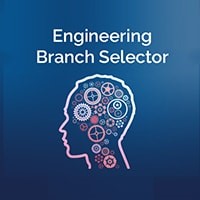GLA Full Form is stands for Generalized Linear Algebra (GLA) extends the concepts of conventional linear algebra, incorporating better-dimensional tensors, non-linear capabilities, and complicated alterations. While linear algebra offers ordinarily with vector areas and linear mappings, GLA broadens this scope, making it relevant to a much broader array of mathematical entities and operations. This generalization is vital in fields where conventional linear strategies fall quick, which include big information analytics, machine mastering, physics, engineering, and laptop pix.

Introduction of GLA Full Form
Generalized Linear Algebra (GLA) is an extension of conventional linear algebra, encompassing a broader range of mathematical operations and structures. While linear algebra specializes in vector spaces and linear mappings among them, GLA full form expands these principles to comprise higher-dimensional tensors, non-linear capabilities, and complicated ameliorations.
This generalization is essential in various fields of arithmetic, technological know-how, and engineering, where traditional linear strategies are insufficient for solving greater elaborate troubles.
The importance of GLA lies in its potential to offer a unified framework for coping with a various array of mathematical entities and operations.
By extending the concepts of linear algebra, GLA lets in for the evaluation and manipulation of multi-dimensional records, which is specifically applicable in the age of big records and superior computational fashions.
Applications of GLA are vast, starting from gadget getting to know and records science to physics, engineering, and pc pix. In device learning, for instance, GLA strategies are fundamental in developing algorithms for duties which include fundamental issue evaluation (PCA) and guide vector machines (SVM).
Historically, the development of GLA can be traced returned to the evolution of linear algebra itself, which has been a cornerstone of mathematical notion since the 19th century.
With the advent of cutting-edge computational energy, the need for more state-of-the-art algebraic gear have become apparent, main to the development of generalized strategies.
Today, GLA maintains to evolve, driven by using improvements in computational generation and the growing complexity of clinical and engineering troubles.
History of the GLA Full Form
- The records of Generalized Linear Algebra (GLA) is deeply rooted within the evolution of linear algebra, a fundamental branch of mathematics that has fashioned numerous clinical and engineering disciplines since the 19th century.
- Linear algebra initially centered on fixing structures of linear equations and knowledge vector areas and linear mappings.
- These foundational ideas have been instrumental inside the development of severa mathematical theories and packages.
- The formalization of linear algebra commenced within the mid-1800s with the paintings of mathematicians including Arthur Cayley and James Joseph Sylvester, who brought the ideas of matrices and determinants.
- These tendencies laid the basis for further improvements inside the 20th century, consisting of the formulation of eigenvalues and eigenvectors through David Hilbert and others.
- As computational technology advanced within the mid-twentieth century, the restrictions of conventional linear algebra have become apparent.
- The growing complexity of clinical and engineering troubles required greater state-of-the-art equipment, leading to the improvement of Generalized Linear Algebra.
- GLA extends the standards of linear algebra to better-dimensional areas and carries non-linear capabilities, offering a greater versatile framework for current applications.
- In the overdue twentieth and early twenty first centuries, the upward thrust of huge statistics, machine getting to know, and advanced computational models further propelled the development of GLA.
- Researchers and practitioners recognized the want for generalized methods to deal with multi-dimensional records and complex adjustments, main to sizable advancements inside the area.
Today, GLA maintains to adapt, driven by using ongoing technological progress and the ever-developing complexity of problems in various scientific and engineering domains. It remains a dynamic and essential area of study, bridging the gap between classical mathematics and modern computational demands.
Purpose of the of the GLA Full Form
- The motive of Generalized Linear Algebra (GLA) is to extend the abilties of conventional linear algebra to address greater complicated and higher-dimensional mathematical troubles.
- Traditional linear algebra is fundamental in know-how vector spaces, linear mappings, and matrix operations, but its scope is confined while handling multi-dimensional facts and non-linear adjustments.
- GLA overcomes these barriers by way of generalizing these concepts, offering a sturdy framework for a much wider range of applications.
- One of the primary purposes of GLA is to facilitate the manipulation and analysis of multi-dimensional arrays, or tensors, which are critical in lots of cutting-edge clinical and engineering fields.
- This capability is important within the age of huge records, wherein datasets frequently exceed the capacity of traditional linear methods.
- GLA lets in for efficient facts discount, sample reputation, and complex statistics variations, making it vital in facts technological know-how and system gaining knowledge of.
- In device studying, GLA strategies underpin key algorithms consisting of foremost aspect evaluation (PCA) and assist vector machines (SVM), that are vital for duties like dimensionality reduction and class.
- Similarly, in physics and engineering, GLA allows the modeling of multi-dimensional phenomena and the fixing of complicated structures that would be infeasible with trendy linear algebra alone.
- Furthermore, GLA supports advancements in computational era, along with parallel and distributed computing, enhancing the performance and scalability of huge-scale computations.
- This makes GLA a critical tool for researchers and practitioners aiming to solve cutting-edge medical and engineering demanding situations, making sure that mathematical methods preserve tempo with tips to progress.
Eligibility Criteria GLA Full Form
Eligibility standards for packages or courses associated with Generalized Linear Algebra (GLA) normally require a strong basis in mathematics and associated fields. These standards ensure that scholars possess the vital skills and knowledge to grasp advanced standards in GLA.
The specific necessities may additionally vary depending on the level of the program (undergraduate, graduate, or expert development) and the organization providing it.
Here are not unusual eligibility criteria:
- Educational Background: Undergraduate Programs: Completion of excessive faculty or equal with a sturdy emphasis on arithmetic, inclusive of publications in algebra, calculus, and geometry.
- Graduate Programs: A bachelor’s degree in arithmetic, physics, engineering, pc technological know-how, or a associated field. Prior coursework in linear algebra, multivariable calculus, and differential equations is typically required.
- Professional Development Courses: Relevant work experience in fields that utilize superior mathematics, which includes facts technology, device mastering, or engineering, at the side of a strong understanding of undergraduate-degree linear algebra and calculus.
- Prerequisite Knowledge: Proficiency in linear algebra, which include matrix operations, vector areas, and eigenvalues/eigenvectors. Familiarity with primary principles of calculus and differential equations .For superior packages, information of programming languages inclusive of Python or MATLAB, which might be often used for computational programs in GLA.
- Additional Requirements: Graduate Programs: GRE scores (if required), letters of recommendation, a announcement of purpose outlining the candidate’s interest in GLA, and relevant research or undertaking revel in.
- Language Proficiency: For non-local English speakers, proof of English talent thru assessments like TOEFL or IELTS may be required.
Pattern of GLA Full Form
Here is a table summarizing the pattern and key components related to Generalized Linear Algebra (GLA):
| Component | Description |
|---|---|
| Introduction | Overview of GLA, its significance, and historical context. |
| Basic Concepts | Fundamental ideas from linear algebra extended to GLA, including vectors, matrices, and non-linear functions. |
| Mathematical Foundations | Core mathematical principles such as vector spaces, linear transformations, and eigenvalues/eigenvectors. |
| GLA Structures | Advanced structures including tensors, multilinear maps, and various matrix decompositions (LU, QR, SVD). |
| Applications | Real-world uses of GLA in fields like machine learning, data science, physics, engineering, and computer graphics. |
| Advanced Topics | Complex subjects like numerical methods, sparse matrices, quantum computing, and parallel computations in GLA. |
| Software and Tools | Popular libraries (NumPy, SciPy, TensorFlow) and computational tools for implementing GLA. |
| Case Studies | Examples of GLA applications in industry and research, showcasing practical implementations and benefits. |
| Challenges and Future Directions | Discussion of current limitations, ongoing research, and future trends in GLA. |
| Conclusion | Summary of key points and the future outlook of GLA. |
| References | Comprehensive list of books, research papers, and online resources for further reading. |
| Appendices | Supplementary materials like glossary of terms, mathematical notations, and additional resources. |
Preparation Strategies of GLA Full Form
Preparing for a route or application in Generalized Linear Algebra (GLA) calls for a strategic technique to construct a strong foundation within the essential mathematical standards and computational competencies.
Here are key strategies to efficiently prepare:
- Strengthen Mathematical Foundations: Review Linear Algebra: Master the basics of vectors, matrices, matrix operations, vector areas, and eigenvalues/eigenvectors. Textbooks like “Linear Algebra and Its Applications” with the aid of Gilbert Strang are excellent sources.
- Advance to Multivariable Calculus: Ensure a strong know-how of calculus, mainly subjects concerning multivariable functions and partial derivatives.
- Learn Programming Skills: Familiarize with Computational Tools: Gain skillability in programming languages normally used in GLA, consisting of Python or MATLAB. Practice the usage of libraries like NumPy, SciPy, and TensorFlow for imposing linear algebra operations and algorithms.
- Engage in Problem-Solving: Practice with Real-World Problems: Solve practical troubles and case research that follow GLA principles. Use on-line platforms like Khan Academy, Coursera, or MIT OpenCourseWare for added sporting activities and tutorials.
- Participate in Study Groups: Collaborate with friends to discuss hard standards and remedy issues together, improving know-how via group getting to know.
- Utilize Online Resources: Educational Websites and Videos: Use assets like YouTube, Khan Academy, and edX for lectures and tutorials on superior linear algebra and GLA topics.
- Interactive Tools: Engage with interactive tools and simulations that visualize complicated GLA standards and operations.
- Focus on Applications: Explore Diverse Applications: Understand how GLA is carried out in fields along with device gaining knowledge of, facts technology, physics, and engineering. Study specific examples to see how theoretical concepts are utilized in practice.
Exam Registration of GLA Full Form
Registering for an examination or direction related to Generalized Linear Algebra (GLA) generally entails several key steps.
Here’s a streamlined manual that will help you through the method:
Identify the Exam or Course: Research numerous institutions or structures supplying GLA-related checks or publications. Look for legit universities, on-line guides, or certification packages.
Check Eligibility Requirements: Ensure you meet the eligibility standards, together with having a history in arithmetic, linear algebra, calculus, or relevant work experience. Some programs may additionally require proof of previous coursework or ranges.
Gather Necessary Documents: Prepare all required files, which can also include transcripts, identity, proof of previous coursework, and letters of recommendation (for superior packages).
Create an Account: Register an account at the group’s or platform’s website. Provide correct personal information and create a secure login.
Complete the Application Form: Fill out the utility shape with all vital info. Be thorough and unique to keep away from any troubles along with your registration.
Pay the Registration Fee: Pay any required registration or exam charges. Check if there are any available reductions, scholarships, or economic useful resource options.
Submit Supporting Documents: Upload or send all required assisting files. Ensure they may be well scanned and legible if submitted electronically.
Confirm Registration: After filing your utility and payment, verify your registration by checking for a confirmation email or notification at the platform.
Prepare for the Exam: Once registered, start preparing for the exam the usage of recommended have a look at substances and assets provided by the course or exam organizers.
Stay Informed: Keep tune of any communications from the group or platform regarding exam dates, coaching tips, and different critical data.
Exam Day Guidelines of GLA Full Form
To make sure a smooth and a success revel in at the examination day for a Generalized Linear Algebra (GLA) path, comply with these hints:
Review Materials: Go over your notes, textbooks, and any practice issues or mock exams.
Sleep Well: Ensure you get an awesome night time’s sleep before the exam day
Arrive Early: Arrive on the examination vicinity as a minimum half-hour earlier than the start time to avoid any final-minute rush.
Bring Necessary Materials: Carry all required materials inclusive of identity (ID), admission ticket, pens, pencils, erasers, and an permitted calculator if allowed.
During the Exam: Read Instructions Carefully: Before beginning, read all commands thoroughly to recognize the format and requirements.
Manage Time Effectively: Allocate a while wisely. Spend the best amount of time on every segment and question, and move on if you get stuck.
Answer All Questions: Attempt all questions, as there might be no penalty for guessing. Make certain to review your answers if time allows.
Stay Calm and Focused: Keep a relaxed and high quality mind-set for the duration of the exam. Take deep breaths in case you experience worrying.
Focus on Your Work: Avoid distractions and concentrate on your paper. Ignore what others are doing.
Review Your Performance: After the examination, make an effort to mirror for your overall performance and pick out areas for development.
Relax and Rejuvenate: Regardless of how the exam went, make an effort to loosen up and rejuvenate.
Frequently Asked Questions (FAQs)
Q1. What is Generalized Linear Algebra (GLA)?
Ans. GLA extends traditional linear algebra by incorporating higher-dimensional tensors, non-linear functions, and complex transformations, enhancing its applicability to modern computational and scientific challenges.
Q2. Why is GLA important?
Ans. GLA provides a broader framework for handling multi-dimensional data and non-linear relationships, crucial for fields like machine learning, data science, physics, and engineering.
Q3. What are the key concepts in GLA?
Ans. Key concepts include tensors, multilinear maps, advanced matrix decompositions (e.g., SVD), and applications in numerical methods and computational mathematics.
Q4. How does GLA differ from traditional linear algebra?
Ans. Traditional linear algebra focuses on linear mappings and operations in vector spaces, while GLA extends these principles to encompass more complex mathematical structures and transformations.
Q5. What are some applications of GLA?
Ans. GLA is used in machine learning algorithms (e.g., PCA, SVM), data analysis, signal processing, quantum computing, and modeling complex systems in physics and engineering.
Q6. What skills are needed to study GLA?
Ans. Proficiency in linear algebra, calculus, and basic programming (Python, MATLAB) is beneficial. Strong analytical and problem-solving skills are also important.
Q7. Where can I learn GLA?
Ans. GLA courses are offered at universities, online platforms (Coursera, edX), and through specialized workshops and conferences. Textbooks and online resources (e.g., lectures, tutorials) are also available.



















